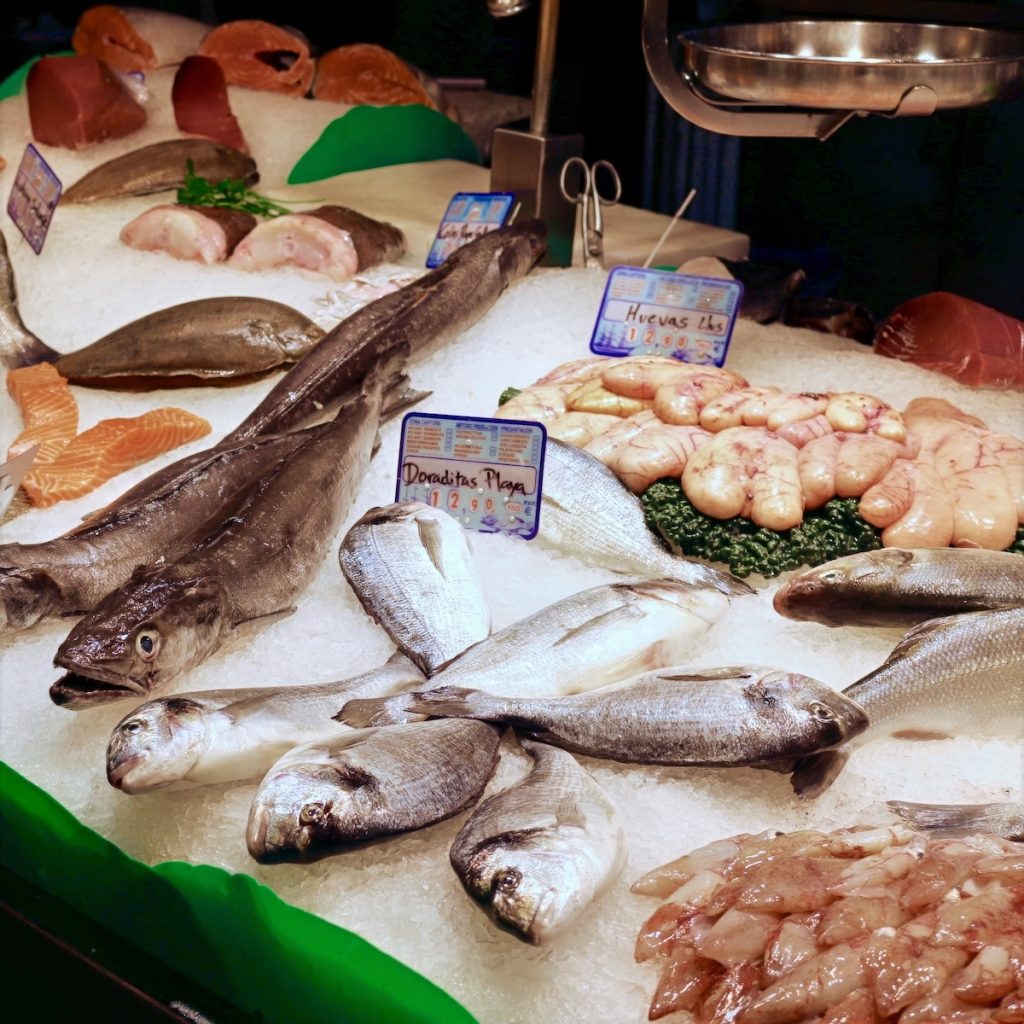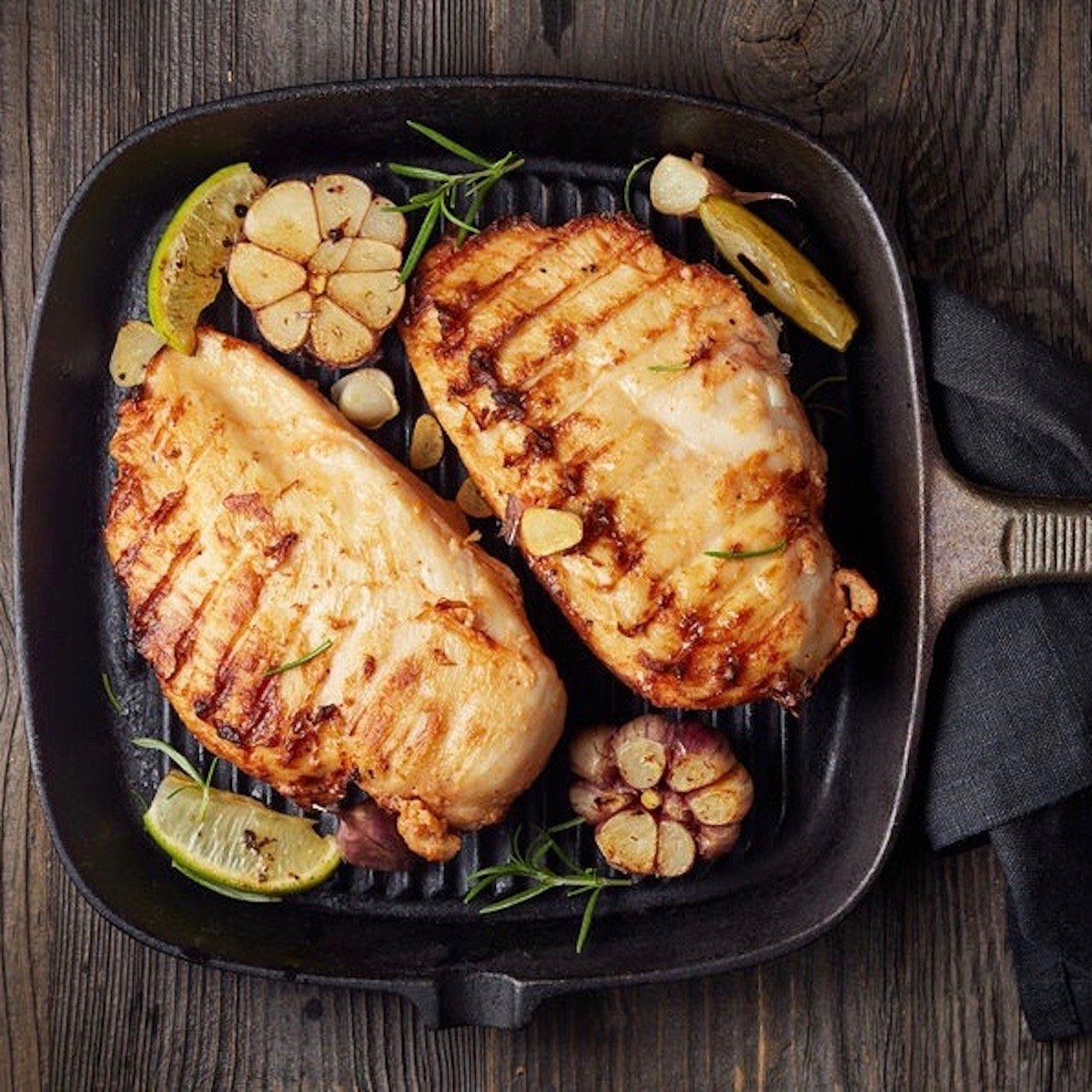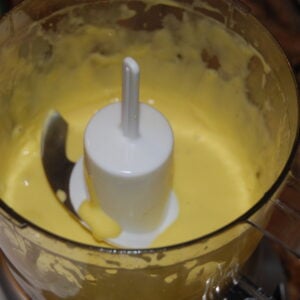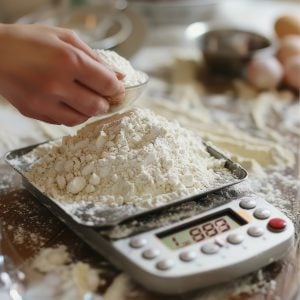The Ultimate Guide to Choosing, Storing, and Cooking Fresh Fish
Seafood can be one of the most delicious and nutritious parts of your diet—if you know how to handle it right. But let’s face it: fish and shellfish can also be intimidating. This post looks at cooking and storing seafood.
How long does salmon last in the fridge? Is it okay to cook shrimp from frozen? How do you know when scallops are done without turning them into rubber? If you’ve ever typed one of those questions into a search bar, you’re not alone.
In this post, I’m looking into the most searched questions about cooking and storing seafood. From freshness tips to safe temperatures, I’ll answer what everyone’s wondering so you can serve seafood with confidence.
Whether you’re dealing with a whole fish, frozen fillets, or a bag of mussels, we’ll cover how to buy, store, prep, and cook it like a pro—without wasting a bite or risking food safety.
We’ll also bust a few myths (yes, fish can smell like the ocean and still be fresh) and give you quick, practical tips to help you enjoy seafood more often and with less guesswork.
So let’s start because great seafood shouldn’t be a mystery. It should be dinner.
Top Questions About Buying, Storing, and Cooking Fish—Answered
How to Choose the Freshes Seafood
To choose the freshest seafood, start by checking its smell. Fresh seafood smells like the ocean—clean and slightly briny, not fishy or sour.
Look closely at the eyes of whole fish; they should be clear, bright, and bulging, not cloudy or sunken. The flesh must be firm and bounce back when pressed, not soft or mushy.
For shellfish, the shells should be tightly closed or close when tapped, indicating they are alive. Avoid seafood with discoloration, slime, or dry edges.
For fish fillet, first, check the color—it should look vibrant and natural for that type of fish, not dull or faded. Avoid dry, slimy, or discolored filets like browning or dark spots. Also, if you can, smell the filet—fresh fish has a mild, clean scent, never a strong fishy or sour odor.
Finally, buy from reputable sellers who properly store seafood on ice or refrigerated displays. These steps help ensure you pick the freshest catch every time.
Most importantly, you should get to know your fishmonger. Ask them what’s fresh today; they should direct you to the freshest fish of the day.
How to Store Fresh Seafood Safely
To store fresh seafood properly, keep it cold and use it quickly. First, refrigerate it as soon as you get home.
Place the seafood on a plate or shallow pan, cover it with plastic wrap or foil, and set it on a bed of ice. For extra freshness, place the setup in a bowl so that the melted ice drains away. Replenish the ice as needed. Keep your fridge at 32–38°F for optimal storage.
For shellfish like clams or mussels, store them in a breathable container like a mesh bag or a bowl covered with a damp towel—never in airtight plastic, or they’ll suffocate. If you need to store fish for more than a day or two, wrap it tightly in plastic, then foil, and freeze it. Label it with the date and use it within two months for best quality.
How Long Does Seafood Last in the Fridge?
Seafood stays fresh in the refrigerator for only a short time, so use it quickly. Most raw fish and shellfish last 1 to 2 days when properly stored at 32–38°F. Fatty fish like salmon or mackerel may spoil faster than leaner fish like cod or halibut.
Live shellfish—such as clams, mussels, and oysters—can last up to 2 days if kept cold and damp in a breathable container. Cooked seafood generally lasts 3 to 4 days in an airtight container in the fridge.
Always check for signs of spoilage before cooking: a strong odor, slimy texture, or discoloration means it’s time to toss it. When in doubt, don’t risk it.
Ways to Cook Seafood
Seafood is incredibly versatile and works beautifully with a variety of cooking methods. Each technique brings out different flavors and textures:
Method | Best For | Technique | Notes |
| Grilling | Firm fish (swordfish, salmon, tuna) | Brush with oil; cook over high heat | Use a grill basket for delicate fish to prevent sticking or breaking |
| Baking | Whole fish, fillets | Bake at 375–425°F until opaque and flaky | Add herbs, citrus, or breadcrumb crust for extra flavor |
| Broiling | Fillets, shrimp | Broil close to heat source for browning | Top-down heat gives a grilled-like finish |
| Sautéing | Thin fillets, scallops | Cook quickly in hot pan with oil or butter | Flip once for even browning |
| Steaming | Delicate white fish, shellfish, mussels | Use steamer basket or parchment pouch | Retains moisture; light and healthy |
| Poaching | Lean fish (cod, halibut) | Simmer gently in water, broth, or wine | Moist, tender results without added fat |
| Frying | Battered fish or shellfish | Deep- or pan-fry at 350–375°F | Drain on paper towels to reduce greasiness |
| Ceviche | Raw fish (previously frozen) | Marinate in citrus juice to “cook” | Not heat-based; freeze first to kill parasites |
How Do You Know When Fish Is Fully Cooked?
You know fish is fully cooked when the flesh turns opaque and flakes easily with a fork. Insert a fork into the thickest part and twist gently—if it separates into flakes, it’s done. The color should change from translucent to solid white (for white fish) or a deeper shade (for salmon or tuna).
Use a food thermometer for more precision. Fish is fully cooked when its internal temperature reaches 145°F (63°C). At this point, it’s hot enough to kill harmful bacteria and parasites while still keeping the flesh moist.
Avoid overcooking—fish continues to cook slightly after you remove it from the heat, so take it off as soon as it’s just done. Overcooked fish turns dry and tough, losing its delicate texture.
How to Prevent Fish From Sticking to the Pan
Start with a hot, clean, and dry surface. Pat the fish dry with paper towels to remove excess moisture, which causes sticking.
Heat your pan over medium-high heat until it’s hot enough that a drop of water sizzles on contact. Then, add a small amount of oil and let it heat until shimmering.
Gently place the fish in the pan skin-side down if applicable, and don’t move it too soon—fish naturally releases when it’s ready to flip. Use a thin, flexible fish spatula to slide under the fillet cleanly.
Choose nonstick pans for delicate fillets or use well-seasoned cast iron or stainless steel for crisp results. With the right technique, your fish will lift easily and stay beautifully intact.
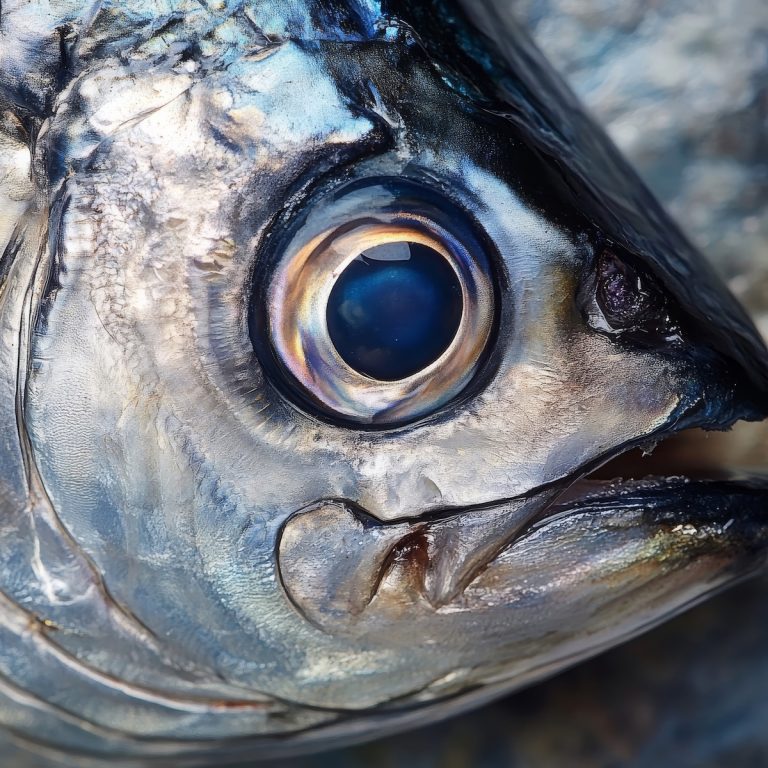
Is Frozen Seafood Any Good?
Frozen seafood can be very good—sometimes even better than “fresh.” Fishermen often freeze fish within hours of catching it, locking in flavor, texture, and nutrients. This “flash freezing” preserves quality better than fish that sits on ice for days during transport.
When buying frozen seafood, check for solid, frost-free packaging and avoid ice crystals or freezer burn, which signal temperature abuse. Thaw it slowly in the refrigerator for best texture, or under cold running water if you’re in a hurry.
Frozen seafood offers convenience, extended shelf life, and often a lower price. As long as it’s handled properly, frozen fish and shellfish are a smart, reliable option for home cooks.
What Is IQF - Frozen?
IQF stands for Individually Quick Frozen, a method that freezes each piece of seafood (or other food) separately at extremely low temperatures, often right after harvest. This technique prevents clumping and helps preserve the seafood’s texture, flavor, and nutrients.
For example, with IQF shrimp or scallops, each one freezes individually instead of in a solid block. That means you can thaw only what you need, reducing waste and speeding up prep time. It also minimizes cell damage, so the seafood doesn’t become mushy after thawing.
IQF is a reliable sign of quality when buying frozen seafood, especially when labeled with the catch or pack date.
Best Ways to Defrost Frozen Seafood
The best way to defrost frozen seafood is to thaw it slowly in the refrigerator. Place the seafood in a bowl or on a plate, cover it, and let it thaw overnight. This method preserves texture and keeps it at a safe temperature (below 40°F) to prevent bacterial growth.
If you need to defrost seafood quickly, use the cold water method. Seal the seafood in a leak-proof plastic bag and submerge it in a bowl of cold water. Change the water every 30 minutes. Most small portions thaw in about an hour.
Avoid thawing seafood at room temperature or in warm water—this encourages bacterial growth. Never use a microwave unless the seafood will go directly into cooking, as uneven thawing can ruin the texture.

What Type of Parasites Can Be Found in Seafood?
Seafood can host several types of parasites, especially if consumed raw or undercooked. The most common include:
Anisakis (roundworms) – Found in saltwater fish like salmon, herring, cod, and mackerel. These can cause anisakiasis, a painful gastrointestinal illness in humans.
Diphyllobothrium (tapeworms) – Found in freshwater or anadromous fish (like salmon that migrate from salt to fresh water). Infection can occur if the fish is eaten raw or improperly cooked.
Clonorchis and Opisthorchis (liver flukes) – Found in freshwater fish, especially in parts of Asia. These flukes can affect the liver and bile ducts.
Cryptosporidium and Giardia – Found in shellfish harvested from contaminated water. These parasites cause gastrointestinal illness.
Cooking seafood to the proper internal temperature (145°F or higher) kills parasites. For raw preparations like sushi or ceviche, the FDA recommends using fish that has been frozen at specific temperatures to kill parasites before consumption.
Always buy from reputable sources that follow these safety guidelines.
What Percentage of Seafood Sold Retail Have Parasites?
Parasites are surprisingly common in wild-caught seafood, especially fish like salmon, cod, halibut, and trout. Studies have shown that nearly 100% of wild salmon carry roundworm larvae, while over 75% of wild-caught fish fillets, particularly salmon, contain parasitic worms.
These parasites include roundworms (Anisakis), tapeworms (Diphyllobothrium), and other larvae that naturally occur in the fish’s environment. In contrast, farm-raised fish typically show very low to negligible levels of parasites due to controlled diets and environments.
Despite these high prevalence rates, illness caused by parasites in seafood is rare, especially in the U.S. Parasites account for less than 1% of seafood-related outbreaks, with bacteria and viruses causing the majority of issues.
Most infections happen when people eat raw or undercooked fish without proper freezing or preparation. Cooking seafood to an internal temperature of 145°F (63°C) or freezing it to FDA-recommended levels will kill parasites and make the seafood safe to eat.
Choose farm-raised fish for raw dishes like sushi or ceviche to lower your risk. If you prefer wild-caught fish, ask your fishmonger whether it has been frozen to parasite-killing standards—typically, 4°F (–20°C) for 7 days or –31°F (–35°C) for 15 hours. “Sushi-grade” labeling often indicates this treatment, but it’s always smart to confirm. Following these guidelines, you can enjoy seafood safely, even when served raw.
Sushi Served at Restaurants Has Been "Frozen to Parasite-Killing Standards"?
In the United States and many other countries, sushi-grade fish is required to be frozen to parasite-killing standards before it’s served raw. The U.S. FDA mandates that all fish intended to be eaten raw (with a few exceptions) must be frozen under specific conditions to kill parasites.
These rules apply to most wild-caught fish, which are more likely to carry parasites. However, some fish like tuna are exempt from this requirement because they have a naturally low risk of parasite infection.
Sushi restaurants and reputable suppliers strictly follow these safety standards. Most use pre-frozen, vacuum-packed, sushi-grade fish that has already undergone the required freezing process. This ensures the safety of the raw fish while preserving its taste and texture.
The term “sushi-grade” isn’t legally defined, so it’s important to trust the source. When buying raw fish for home use, always confirm that it’s been frozen according to FDA guidelines if you plan to eat it raw. Restaurants are generally reliable, but it’s fair to ask if you’re unsure.
How Do You Cook Seafood to Safely Avoid Parasites?
To safely avoid parasites, cook seafood thoroughly to an internal temperature of 145°F (63°C). This level of heat kills parasites like Anisakis (roundworms), Diphyllobothrium (tapeworms), and other common invaders found in wild-caught fish.
Check doneness by inserting a food thermometer into the thickest part of the fish. The flesh should turn opaque and separate easily with a fork.
For shellfish like shrimp, scallops, and lobster, the meat should turn firm and white or pink. Clams, mussels, and oysters are safe to eat once their shells open during cooking—discard any that remain closed.
If you’re grilling, baking, frying, or steaming seafood, maintain consistent heat and avoid undercooked centers. For extra safety, avoid partially cooking seafood with the intention of “finishing” it later, as this may not reach parasite-killing temperatures.
When handling raw seafood, keep it separate from cooked or ready-to-eat foods to avoid cross-contamination.
Following these cooking practices eliminates parasite risk while bringing out the best flavor and texture in your seafood.


